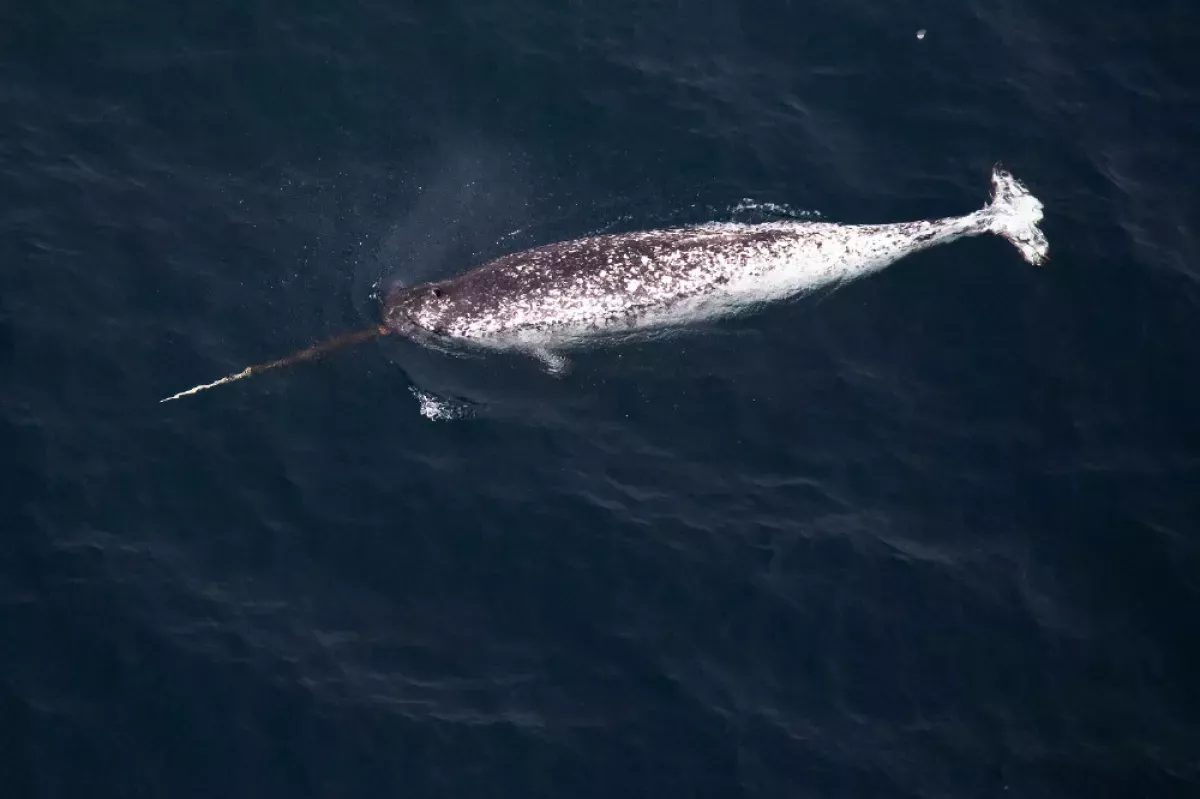The narwhal, a toothed whale species native to the Arctic, is the sole member of the genus *Monodon* and one of two living species in the family Monodontidae. Closely related to the beluga whale, with which it shares habitat and can interbreed, the narwhal is a robust cetacean with a relatively blunt snout, a prominent melon, and a shallow ridge instead of a dorsal fin. Male narwhals possess a distinctive tusk, a protruding left canine ranging from 1.5 to 3.0 meters in length. This tusk is believed to function as a weapon, a feeding tool, a means of attracting mates, or a sensory organ for detecting water salinity. Specialized slow-twitch muscles, combined with jointed neck vertebrae and a shallow dorsal ridge, facilitate the narwhal's movement through the Arctic environment, where it frequently dives to significant depths.
1914: Narwhal Entrapment Events
Around 1,000 narwhal carcasses were discovered in 1914-1915 following entrapment events, predominantly in Disko Bay, West Greenland.
1915: Narwhal Entrapment Events
Following the events of 1914, in 1915, continued discoveries of narwhal carcasses were made due to entrapment, totaling approximately 1000 over the two year period.
1922: IRSNB M 1922
An event or discovery related to IRSNB M 1922 occurred in 1922. Further context is needed to provide a specific title and description.
1972: US Ban on Narwhal Product Imports
The United States banned imports of products made from narwhal parts in 1972 under the Marine Mammal Protection Act.
1990: Discovery of a Possible Narluga Hybrid
In 1990, the remains of an unusual whale were discovered in West Greenland, possessing characteristics of both a narwhal and a beluga.
1999: Increase in Canadian Narwhal Catches
Canadian narwhal catches, which had declined in the late 1980s and 1990s, started to rise again after 1999.
2002: Increased Narwhal Catches in Siorapaluk
Hunters in Siorapaluk reported increased narwhal catches in 2002, potentially due to increased vulnerability caused by climate change.
2007: Analysis of Narwhal Hunts in Hudson Bay
Narwhal hunts in Hudson Bay during 2007 were analyzed for a study.
2008: Increased Narwhal Sea Entrapment
Several narwhal sea entrapment events were recorded in 2008-2010 during the Arctic winter, including in new locations, suggesting later departure from summering grounds.
2010: Increased Narwhal Sea Entrapment
In 2010, along with the events recorded in 2008-2009, continued increased narwhal sea entrapment events were observed, particularly during the Arctic winter, raising concerns about changing environmental conditions and their impact on migration patterns.
2011: Narwhal Population in Northern Hudson Bay
In 2011, approximately 12,000 narwhals were estimated to be present in Northern Hudson Bay.
2013: Economic Analysis of Narwhal Hunting
A 2013 paper, based on a 2007 analysis of narwhal hunts in Hudson Bay, estimated a gross revenue of CA$6,542 (US$6,091) per narwhal.
2013: Narwhal Population near Somerset Island
Around 49,000 narwhals were estimated near Somerset Island in 2013.
August 2016: Narwhal Tusk Usage for Feeding
Drone footage from Tremblay Sound, Nunavut, in August 2016, showed narwhals using their tusks to tap and stun small Arctic cod to facilitate feeding.
2017: Global Narwhal Population Estimate
In 2017, the global narwhal population was estimated at 170,000, with 123,000 mature individuals.
2018: Molecular Analysis of Monodontidae Fossils
A 2018 molecular analysis of Monodontidae fossils suggests that they diverged from Phocoenidae between 10.82 and 20.12 million years ago.
2018: Alphaherpesvirus in Narwhal
In 2018, a female narwhal was found to have alphaherpesvirus.
2019: Phylogenetic Tree of Monodontidae
A phylogenetic tree of the Monodontidae family was published based on a 2019 study.
2019: Confirmation of Narluga Hybrid
DNA analysis in 2019 confirmed that the unusual whale remains found in 1990 belonged to a narluga, a hybrid between a narwhal and a beluga.
2019: Discovery of Possible Narwhal Ancestor
In 2019, the fossil species Casatia thermophila, discovered in central Italy, was proposed as a potential ancestor of the narwhal.
2020: Phylogenetic Study of Narwhal and Beluga Divergence
A 2020 phylogenetic study using mitochondrial DNA indicated that narwhals and beluga whales split around 4.98 million years ago.
Mentioned in this timeline
Italy officially the Italian Republic is located in Southern and...
Climate change encompasses global warming and its far-reaching effects on...
Greenland is an autonomous territory within the Kingdom of Denmark...
Trending

12 days ago Daniel Caesar Announces Surprise Free North American Tour, Kicking Off With Pop-Up Concerts
5 days ago Switzerland: Latest news, health premiums and immigration are top concerns for 2025.
15 days ago Iran faces snapback sanctions from Europe amid nuclear program deadlock and economic fears.
4 months ago Tessa Thompson: A Look at Her Career and Accomplishments
3 months ago Generali Open: Ofner Featured Amidst Misolic vs Etcheverry Match Preview and Schedule

The Billboard Hot is the main song chart in the United States published weekly by Billboard magazine Its rankings are...
Popular

Candace Owens is an American political commentator and author known...

Charlie Kirk is an American right-wing political activist entrepreneur and...

Greta Thunberg is a Swedish climate activist who gained international...

Kashyap Pramod Patel is an American lawyer and former federal...

Adam Schiff is an American politician and lawyer currently serving...

Jupiter is the fifth and largest planet from the Sun...
